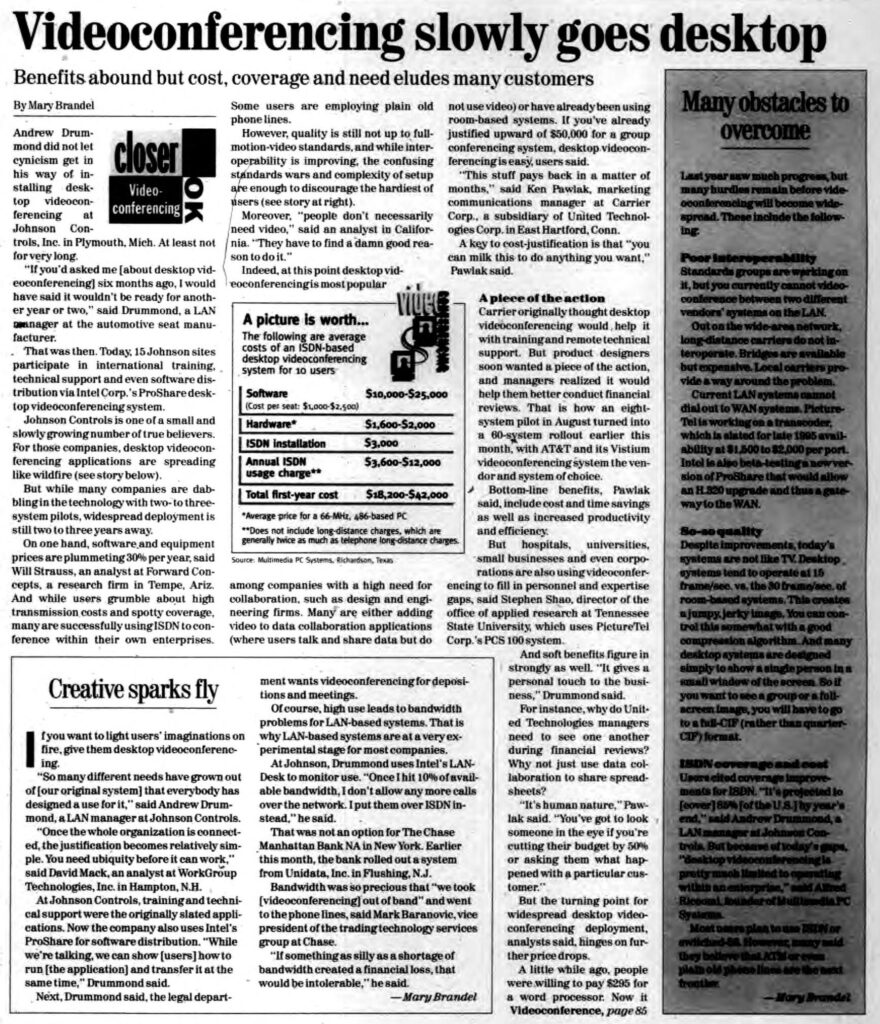Feb. 20, 1995: Videoconferencing gains popularity

Videoconferencing proved to be useful for productivity and collaboration, though high costs limited user adoption.
In the 1990s, videoconferencing technologies advanced faster than users expected. Year after year, the sky-high prices for video conferencing grew smaller and quality issues improved, making the technology increasingly accessible and attractive to businesses. While some companies were unconvinced about the need for video, other companies “with a high need for collaboration, such as design and engineering firms” were quick to adopt the technology, according to an article in Computerworld magazine. For those companies that did try out the new technology, benefits included “cost and time savings, as well as increased productivity and efficiency.” As many industries transitioned to remote work this past year, video conferencing technology again proved to be useful to staying connected and collaborating.
Despite the many recognized benefits of videoconferencing — from worker productivity to an otherwise impossible personal touch of speaking face to face — adoption was limited due to the high costs associated with deploying the technology. A table in Computerworld magazine cited $18,000-$42,000 as an estimate of first year costs for desktop videoconferencing systems. Today, videoconferencing capabilities are automatically included with most phones and computers, and videoconferencing apps that do carry a subscription fee are much more affordable relative to the costs in the 1990s. A scientist interviewed by Computerworld was spot-on in his prediction that in a few years, people would “be working in ways they never dreamed of and teleconferencing will be part of it.”
–by Kathleen Esfahany